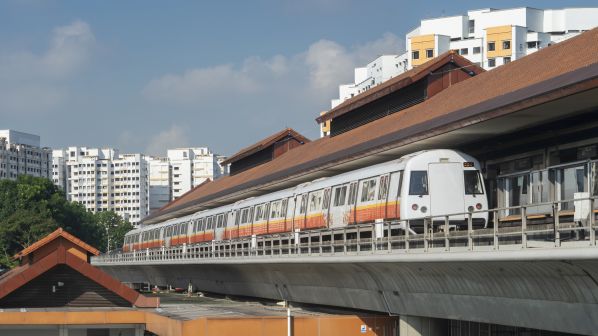PUBLIC transport in Singapore received a major boost on August 27 2021 when the 13km second phase of the Thomson-East Coast Line (TEL) opened to passengers.
The line adds six stations and brings another 100,000 residents of the city state to within a 10-minute walk of a metro station. Construction continues on the full 43km line which will have 32 stations with the third phase scheduled to open next year. TEL is expected to be used by 500,000 passengers per day when it begins full operation in 2025, which is expected to double in the long term.
Metro lines of this scale are inevitably complicated undertakings and require careful management. Unfortunately, things do occasionally go wrong, meaning backup power systems are an indispensable component of any metro network. These systems can step in to provide essential power if there is a failure in the main power supply, helping to preserve key components and systems, and safety for passengers and staff.
In the urban rail environment, uninterrupted power supply (UPS) is essential to maintain operation of mission-critical operating systems such as communication, signalling, Integrated Supervisory Control System (ISCS), and automated fare collection as well as to maintain emergency lighting, fire protection, and the functionality of the operations control centre.
Deploying a UPS for the TEL was especially challenging, not least due to the Singapore’s high demands for metro operation safety, reliability and stability, and the requirement for a UPS solution that can facilitate a mean repair time of less than 30 minutes. Singapore’s hot and humid environment was another key consideration in the deployment of the UPS. There are also space constraints for installation of back-up power equipment due to the cost of underground construction.
Huawei ultimately won the contract with Singapore’s Land Transport Authority (LTA). The company is supplying its 140-module UPS5000, which uses 50kVA/3 U ultra-high-density hot swappable power modules. This is different from the traditional distributed power supply offered by single point power supply solutions and offers numerous advantages.
For example, the modular design enables a centralised power supply, which greatly improves reliability and have been proven to reduce failure rates by half. The use of smaller and lighter lithium-ion batteries has also cut the footprint of the battery cabinet by half, reducing installation costs compared with a traditional UPS and meeting a key demand for the project. In addition, by using a single supplier, the complexity of sourcing spare parts is reduced while remote monitoring of by the UPS Management System, which is connected to the integrated Building Maintenance System, facilitates a straightforward maintenance procedure.
The system also meets LTA’s demands for high levels of safety. The dust and water-proof design of the UPS5000 eliminates the risk of short circuits and electric shocks while the use of highly stable LFP lithium iron phosphate minimises the risk of the batteries catching fire. The battery also has a lifespan of up to 15 years and can work reliably at high temperatures, another key consideration in Singapore and other tropical countries.
Of course, Huawei is not standing still with the UPS5000. The company recognises the need to deliver sustainable and reliable solutions to meet demand for green transport.
For example, by developing simplified, secure, open, and intelligent products and solutions for the railway industry across Asia Pacific and around the world that will facilitate digitalisation and improve the efficiency and reliability of railway networks.
Indeed, in the next five years Information Technology devices will continue to evolve, and ever higher computing power and density will be needed along with greater central processing unit (CPU) and server power. This is where Huawei is focusing its ongoing investment in research and development, namely in efficient and intelligent power supply and distribution systems. For more information about Huawei’s UPS solution, please click here.

